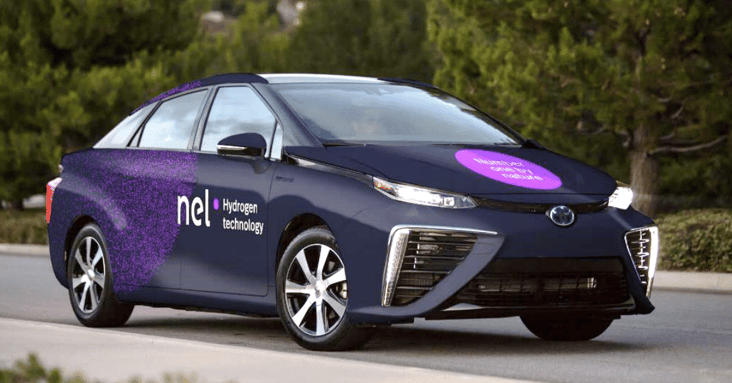This post is one in a series featuring the complete slate of advanced energy technologies outlined in the report This Is Advanced Energy.

Image courtesy of Nel Hydrogen.
Hydrogen is a gaseous fuel that is used mainly in industry. U.S. hydrogen production in is approximately 10.5 million kg/day, primarily for petroleum refining, ammonia production, and methanol production. Hydrogen is also being developed as a fuel for both light-duty and heavy-duty vehicles and as an option for energy storage on the electricity grid. The most common hydrogen production pathway is steam-methane reforming (SMR), in which natural gas is reformed with steam over a catalyst at high temperatures (about 700- 1000°C) to produce a synthesis gas composed mainly of hydrogen (H2) and carbon monoxide (CO). The CO is then converted to additional H2 by the water-gas shift reaction. After removing CO2 and water and polishing the gas to remove residual CO, the high-purity hydrogen is ready for compression or liquefaction. A less common option is water electrolysis, which uses electricity to operate an electrochemical cell, or electrolyzer, in which water is split into pure hydrogen and oxygen. Water electrolysis is a proven technology that has been around commercially for decades and is now attractive in combination with renewably generated power. Hydrogen can also be made from other fossil fuels or biomass, starting with gasification or partial oxidation. The subsequent steps are then similar to SMR, although these pathways are not in widespread commercial use. Other, more novel approaches are also in development, including the use of specialized microorganisms that produce hydrogen via metabolic pathways.
Hydrogen is in limited commercial use as a transportation fuel, primarily in fuel cell vehicles. For stationary applications, there are some niche industrial applications where industrial processes produce excess hydrogen (such as chlor-alkali plants). In this case the hydrogen can use used on-site in fuel cells to generate electricity. Hydrogen is also being considered as an option for storing grid electricity; an electrolyzer would convert excess electricity into hydrogen during off-peak periods and a fuel cell would generate electricity from the hydrogen when it is needed. To date, most hydrogen for transportation is produced on-site in small-scale plants using either SMR or electrolysis. Despite misconceptions, hydrogen fuel is very safe. Hydrogen is non-toxic and, as the lightest element, leaks tend to disperse quickly. Its extensive use as an industrial gas has provided the necessary technology and experience to expand its use as a transportation fuel, including storage technologies and the use of pipelines for long-distance transport, such as the 180-mile pipeline system linking 22 hydrogen plants in Louisiana and Texas.
Hydrogen is unique among fuels in that its production does not require a carbon-based feedstock, so it can be made from any energy source, including electricity. The methods of production lend themselves to both large-scale and distributed applications. Thus, a hydrogen economy, were it to develop, would likely be characterized by a diversity of energy resources and scales of production, even down to the household level. The use of hydrogen as a fuel would offer increased energy security, new options for consumers to meet their household and transportation energy needs, and ready integration with other technologies, such as smart grid and on-site distributed electricity generation.
Learn more about hydrogen-fueled vehicles, an all aspects of the advanced energy economy, in This Is Advanced Energy, a report out from AEE:
